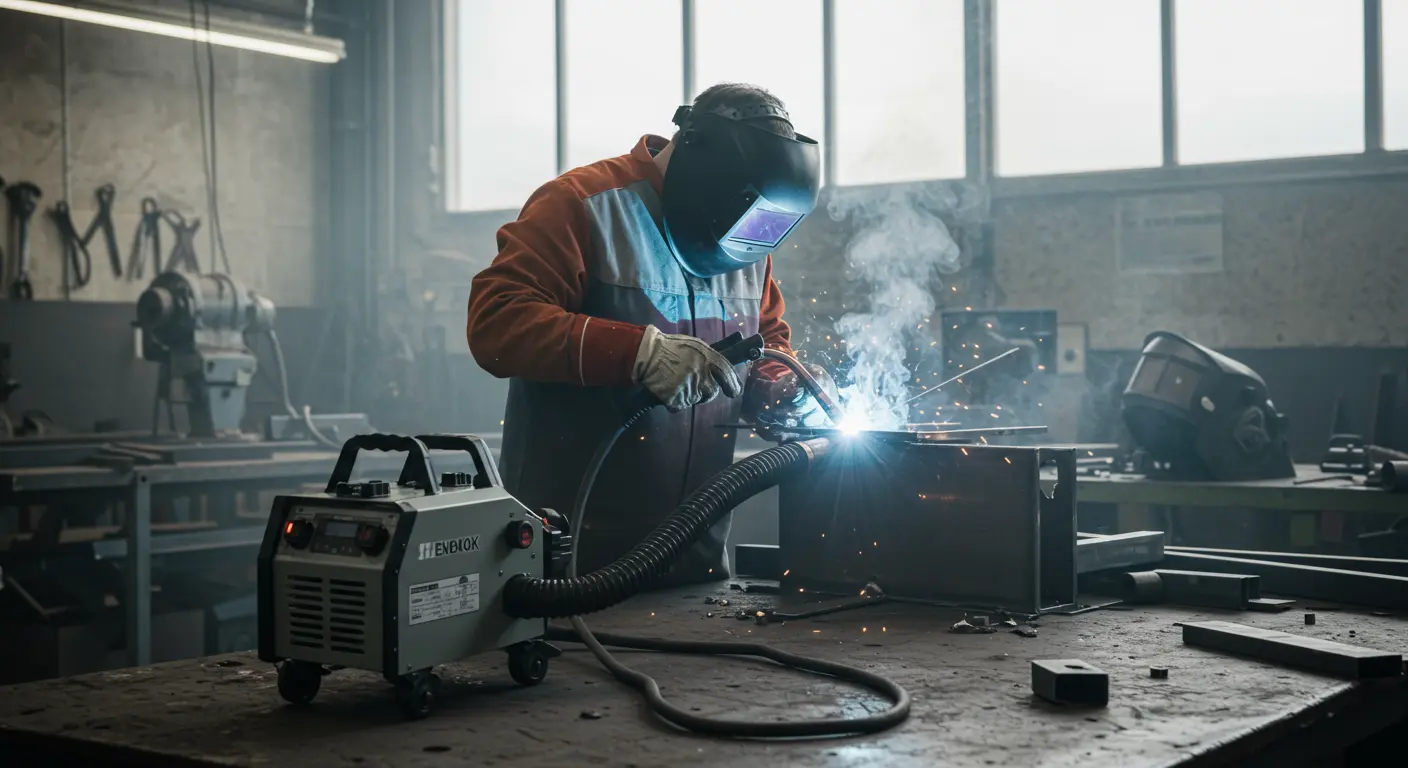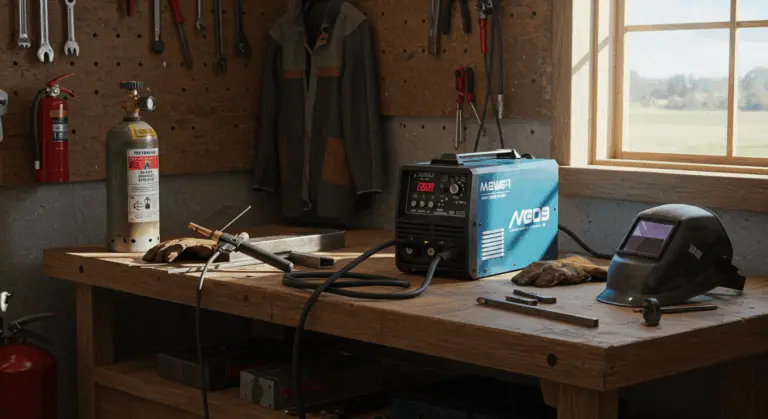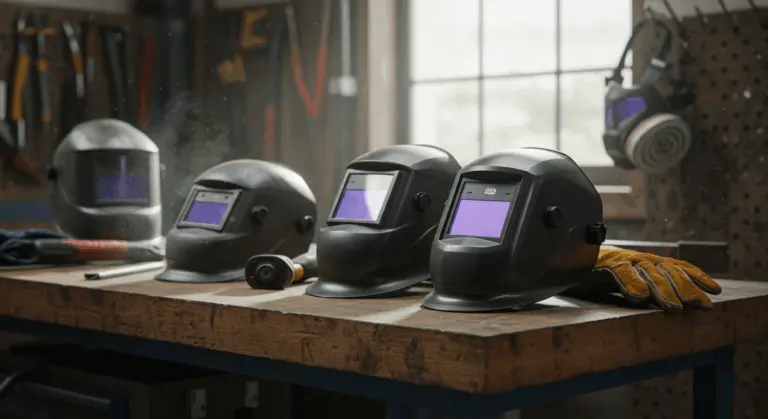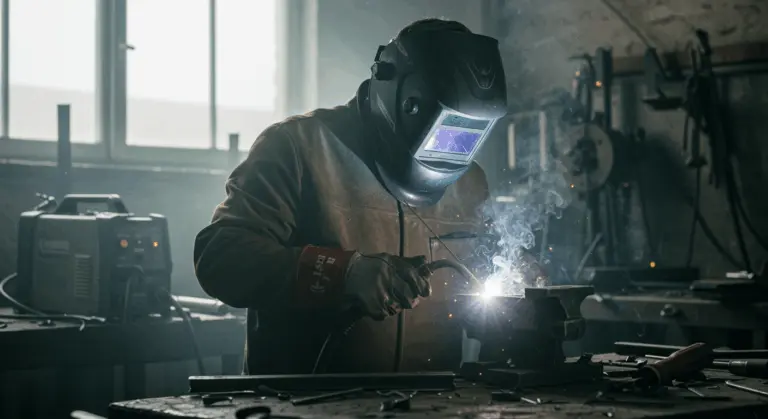Understanding Welding Fumes – What You Need to Know
Welding fumes are a complex cocktail of ultrafine particles that emerge when metals reach temperatures beyond their boiling points. These microscopic particles—primarily metallic oxides, silicates, and fluorides—condense from vapors during welding operations. What makes up this hazardous mixture? It depends entirely on the materials you’re welding and the electrodes in use.
But particles aren’t the whole story. The welding process simultaneously releases harmful gases—ozone, nitrogen oxides (NOX), and carbon monoxide. Together, this airborne cocktail of particles and gases forms what we know as welding fumes.
The reality is stark: The International Agency for Research on Cancer (ARC) classifies them as Group 1 carcinogens, meaning they are definitively known to cause cancer in humans. This classification demands rigorous safety measures.
Effective Fume Control Techniques for Welders
The fundamental principle of fume control is simple: Capture them at their source before they reach your breathing zone. Source capture methods—vacuum hoses mounted directly on welding guns, portable extraction systems strategically positioned near your work area—intercept fumes before they can spread throughout the workspace or compromise your respiratory system.
Proper positioning significantly reduces fume exposure. Always position yourself so natural air circulation or ventilation systems sweep fumes away from your breathing zone. Never place your head directly above the welding pool—that’s where fume concentration peaks. Keep in mind: never position your head between the weld pool and the fume extractor. This creates a dangerous funnel effect, forcing you to breathe contaminated air before it reaches the extraction system.
Welding fume extractors come in various configurations, including:
-
Fume extraction MIG guns with built-in vacuum systems
-
Movable extraction arms that can be positioned near the work
-
Capture nozzles and hoods for larger areas
-
Downdraft tables that pull fumes downward through the work surface
Choosing the Right Welding Process to Minimize Fumes
Your choice of welding process dramatically influences fume generation. Some processes are inherently cleaner than others. TIG (Tungsten Inert Gas) welding, for instance, typically produces significantly fewer fumes than stick welding or flux-cored arc welding. When project requirements allow, prioritize these lower-fume alternatives.
Effective fume reduction requires multiple approaches:
Personal Protective Equipment (PPE) for Welders
Comprehensive personal protective equipment (PPE) protects against three main hazards: fume exposure, radiation, and flying sparks. Essential PPE includes:
Types of Respiratory Protection for Welding
For light-duty welding, disposable N95 respirators offer basic particulate protection. Need higher filtration? N99 masks capture 99% of airborne particles. Both work well for short-duration tasks in well-ventilated spaces.
Intensive welding operations or work with highly toxic materials demand more robust protection. Half-mask or full-face respirators equipped with welding-specific replaceable filters deliver superior defense. These reusable systems create better facial seals and accommodate filters designed to tackle both particulates and specific gases generated during welding.
For maximum respiratory protection, Powered Air Purifying Respirator (PAPER) systems integrated with welding helmets. These systems employ external blower units that draw air through high-efficiency filters, delivering a continuous stream of clean air to your breathing zone.
Best Practices for Safe Welding Environments
Building a safe welding environment starts with comprehensive training on fume hazards, control methods, and proper protective equipment usage. Training requires ongoing reinforcement. Regular refresher sessions maintain safety awareness and introduce emerging protective technologies.
Workspace design is equally important for safety. Whenever feasible, confine welding operations to designated areas equipped with appropriate ventilation systems. For permanent welding stations, consider constructing customized enclosures connected to industrial ventilation networks. These enclosures should feature doors that remain closed during welding—containing fumes and preventing their migration to adjacent work areas.
Laser welding requires additional safety measures. All personnel must wear laser-safe safety glasses calibrated for the specific wavelength in use. Laser welding must occur within laser-safe enclosures that shield against both direct and reflected laser energy. These environments protect against both traditional welding hazards and laser-specific risks.
Health Risks Associated with Welding Fumes
Short-term exposure to welding fumes triggers immediate health effects, while oxygen displacement in poorly ventilated spaces creates asphyxiation risks. Acute symptoms manifest as:
Long-term health effects are more severe. Chronic exposure systematically damages your respiratory system—reducing lung function, triggering chronic bronchitis, and inducing occupational asthma—while dramatically elevating cancer risk. Metal fume fever represents another common affliction, producing flu-like symptoms following exposure to zinc, copper, or magnesium fumes.
Specific metals in welding fumes present unique, severe hazards:
-
Manganese: Exposure can cause nervous system damage similar to Parkinson’s disease.
-
Chromium and Nickel: Found in stainless steel fumes, these are associated with an increased risk of lung and nasal cancer.
-
Lead: Can result in blood poisoning, kidney damage, and bone defects.
Regulatory Standards and Guidelines for Welding Safety
Welding safety operates under a framework of regulatory standards and industry guidelines designed to protect workers from fume exposure and related hazards. Organizations like the American Welding Society (AWS) have developed comprehensive standards addressing multiple facets of welding safety, with particular emphasis on fume control. These standards guide employers and welders implementing effective safety protocols.
For example, the AWS D18 series (D18.1, D18.2, D18.3) provides specific requirements for welding in sanitary applications, integrating safety protocols with quality standards.
Beyond industry-specific guidelines, regulatory agencies like OSHA (Occupational Safety and Health Administration) establish and enforce mandatory safety standards for welding operations. These regulations define permissible exposure limits (Pets) for various welding fume components and mandate specific control measures.





